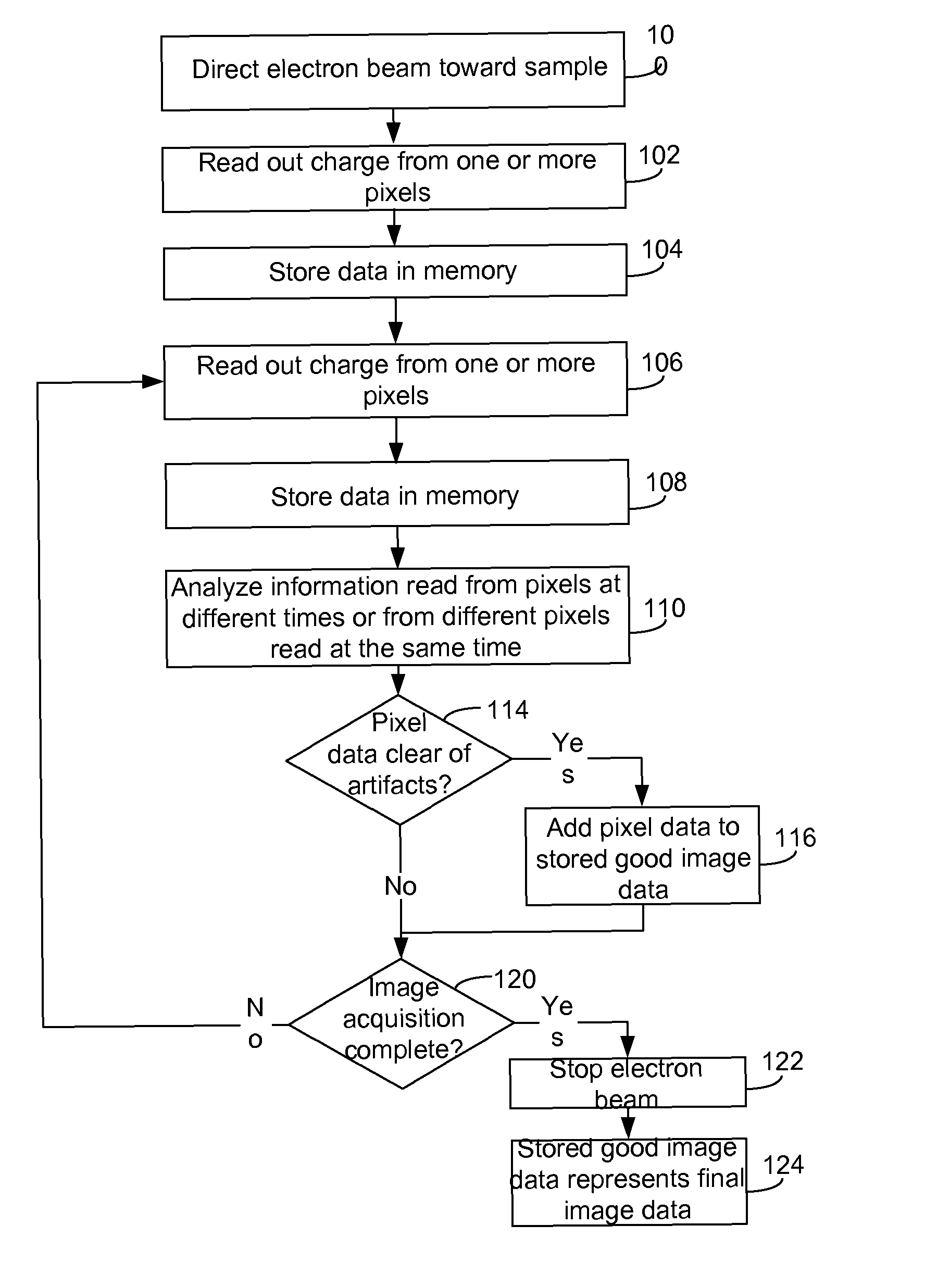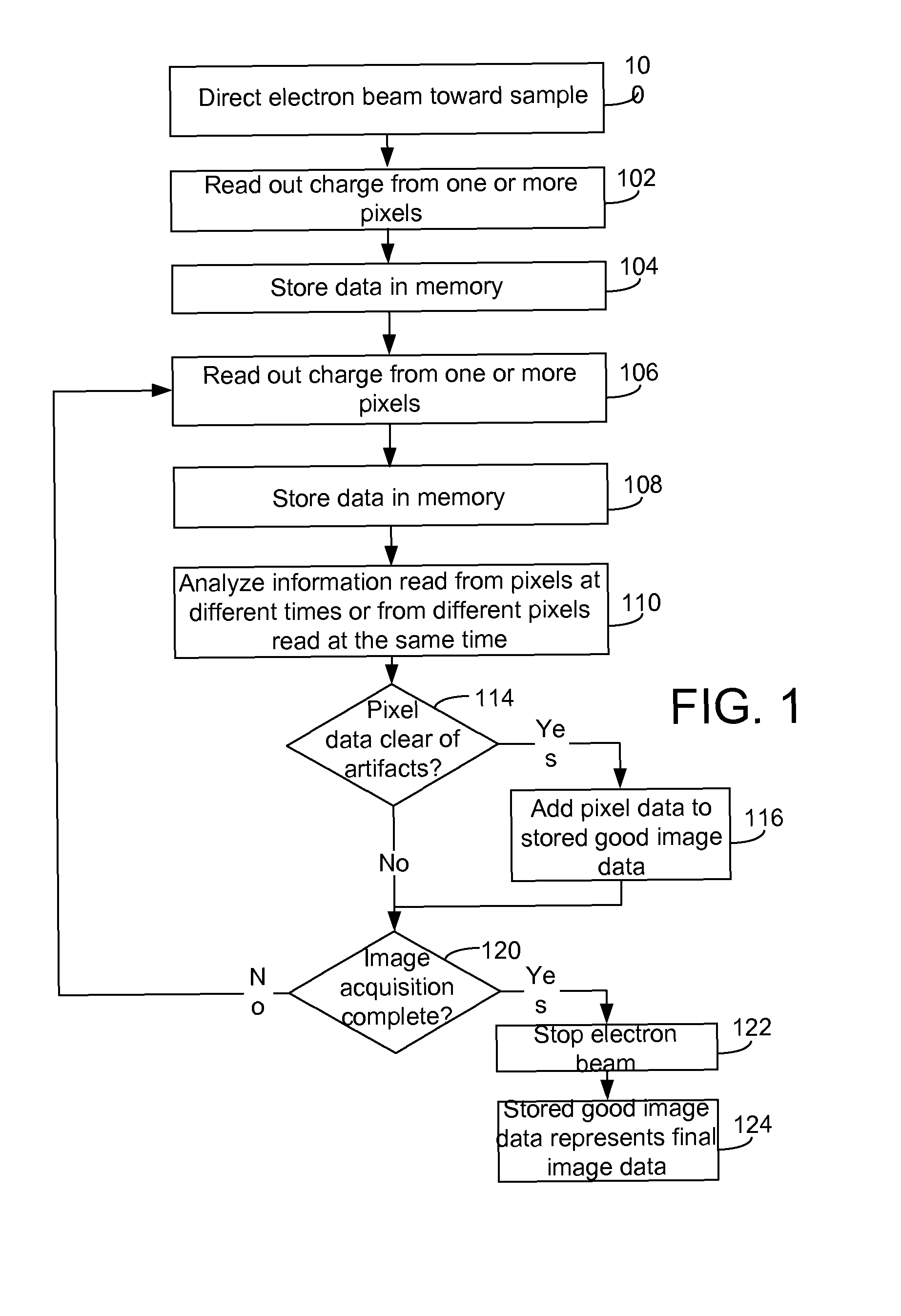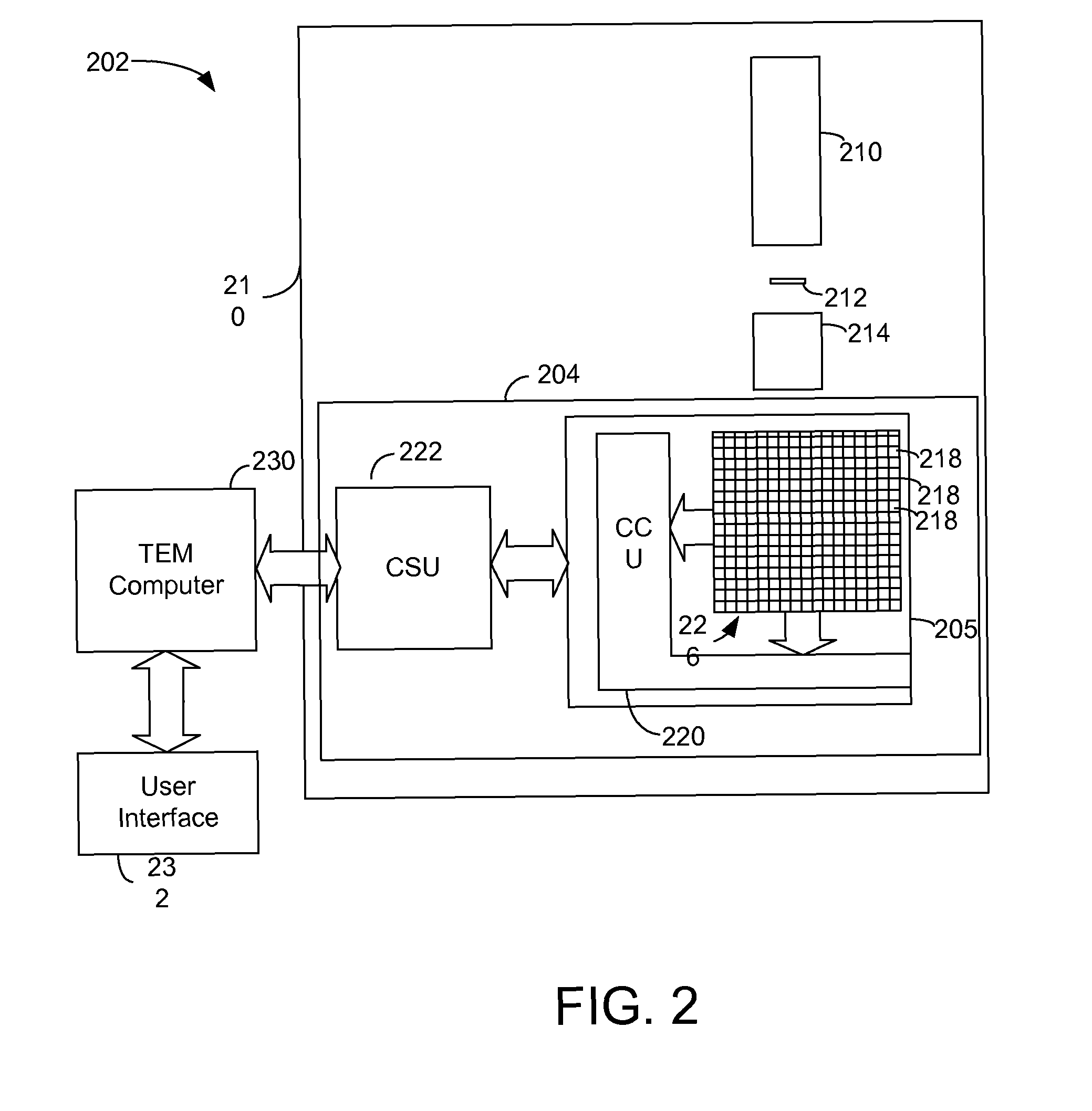Detector system for transmission electron microscope
a transmission electron microscope and detector system technology, applied in the field of electron microscopy, can solve the problems of reducing the detector resolution, the limited field of view provided, and the time required to read out the array of pixels, so as to improve the quality of tem imaging
- Summary
- Abstract
- Description
- Claims
- Application Information
AI Technical Summary
Benefits of technology
Problems solved by technology
Method used
Image
Examples
Embodiment Construction
[0022]Imaging artifacts that occur in images from an electron microscope may render the image less useful. Many artifacts change over time and can be identified and eliminated by comparing image data taken at different times during an image acquisition period. Some artifacts may also be identified by comparing data representing different regions of a single frame. “Frame” as used herein, means a group of pixel data read out in a single read-out period, that is, a group of pixel data read out at essentially the same time. The frame may include data from all pixels or from fewer than all pixels. In a preferred embodiment of the present invention, image data is read from the detector at multiple times while the image is being acquired. That is, a single image can be formed using data from multiple frames. The image data from the different times, or from different parts of the image at the same time, can be compared to determine the presence of artifacts, and such artifacts can be elimi...
PUM
| Property | Measurement | Unit |
|---|---|---|
| thick | aaaaa | aaaaa |
| thick | aaaaa | aaaaa |
| frequency | aaaaa | aaaaa |
Abstract
Description
Claims
Application Information
 Login to View More
Login to View More - R&D
- Intellectual Property
- Life Sciences
- Materials
- Tech Scout
- Unparalleled Data Quality
- Higher Quality Content
- 60% Fewer Hallucinations
Browse by: Latest US Patents, China's latest patents, Technical Efficacy Thesaurus, Application Domain, Technology Topic, Popular Technical Reports.
© 2025 PatSnap. All rights reserved.Legal|Privacy policy|Modern Slavery Act Transparency Statement|Sitemap|About US| Contact US: help@patsnap.com



